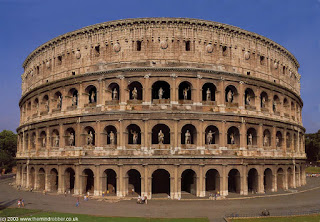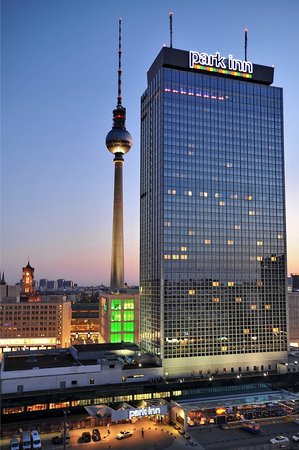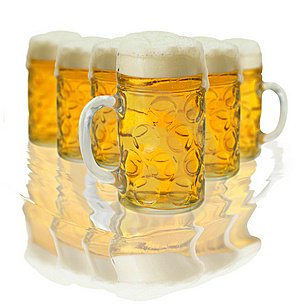Saturday, September 29, 2012
The Bad
The modern Rome that you’ll come into contact first, is run by Italians, it is the Italian capital and the most populous city in the country. Hence, it also reflects all the problems of the country. The economic slow down, the constant influx of unaccounted and sometimes illegal migrants and workers, and believe it or not the trouble of maintaining service standard is difficult in Rome. A wise man on the internet simply put in elegant words: The rent is just too damn high! This level of decentralization leaves the Roman people stranded and has to fend for themselves, hence the segregation within the city. The challenges in the modern world has never been more tested than present. EU as a coalition, as a concept, as an international organization is being put to the test as we now wait and see if it’s all for one, or one for all. ;) The put it more in a polite term, the modern Romans are a practical people, but realistically speaking, the Romans are not an easily trusting group of people. They let their guards down with tourists though, a more docile and naïve group of people who reminds them of who we all once were.
Now I’d hate to end on a sad note. So I’ll include something that I’d left out in The Good, which is the people. Your typical Italian is full of passion. They love visitors and they just seem to have this energy to do things. All things... smart things... stupid things... and all the things in-between. Whereas when compared to North Americans, we look like a bunch of pansies. Well... compared with me, I look like a pansy. They can out drink, out party, out rowdy, and out woo anyone. The influence of Casanova (an Italian) is strong in Italian culture. Every hour is happy hour, and with espresso this good, there is no reason not to. You only live once: that’s the motto.
Sunday, September 23, 2012
The Good
Rome is an absolutely beautiful city with architectural designs that are nowhere to be found in the modern era. The buildings exuberates a level of attention to detail like no other modern design. The city is simply an extravagant display of human ingenuity and accomplishment in the arts. The most appropriate way to describe Rome, and Milan as well is to compare it with time travel. This is about as close as it gets to being thrown back into the Renaissance. Rome is also a city of history. The city was found by two boys who were raised by a mystical wolf, which dates back to the 700s BC Era. I shit you not. It is a story of empires and glory, a child’s fantasy come to life and more. A tale of the rise and fall of Empires and civilization. You won’t be reading it here first, but the city is a very accurate depiction of ancient, Renaissance, and modern Rome. There are three very different faces of the city, which together forms Rome. Words don’t do the look of the city justice and I would rather not start. Otherwise I would be here for days.
Also did I mention the food? It’s spectacularly good. The restaurant scene isn’t dominated by franchise chains with generic formula. There is a good and a not so good aspect to this. The good thing about this is that because restaurant tend to be a family run business. You can often find great food at low prices if you know where to look. There are hidden gems all over Rome. A very runned down restaurant can often turn out to have spectacular food. The bad? Well... it’s either a hit or miss most of the time unless you revisit the same restaurant over and over again. Now I am not a connoisseur or Michelin guide reviewer by any extent, but the Italian culinary formula works and they know it too. So do yourself a favour next time you visit Rome, skip the McDonald’s and Starbucks and opt for something more local, even if it looks daunting at first.
Wednesday, September 12, 2012
Life's Too Short
Today is the fourth day of our stay in Rome and I write this summary with mixed feelings about the city. There is the good the bad and the ugly. What I said about not being able to immerse yourself into the culture of your touring city remains very true in Italy. Perhaps more so in Italy, segregation between tourist and the local does just stop at the cultural and ethnicity level. Segregation in Italy transcends into socioeconomic realm. Which is sort of like a nice way to say that there are a lot of disenfranchised members of society. Which, in turn is another way of saying there’s tons beggars and sketchy people in walking around in Rome. It’s not the nicest thing to say as a first comment, but it is a stark image that is worthy of mention as it occurred to me when I first set foot in Rome. The separation is clear, so much so that the locals treat them like foreigners, these “city dwellers”. Then what happens is that tourists suddenly become the makeshift class of its own in tourist cities such as Rome and Milan. You probably have more in common with the regular Italian than they do with the local lower class, even if you speak a different language or look completely different.
The modern Romans are a diverse people; it is a dynamic city with high volumes of demographic influx. Making matters more complicated is the fact that Rome is a one of Europe’s most visited cities. Making it harder to tell who’s from here and who’s not. Not that it’s important at all, but people there lose track and simply can’t keep track of people coming in and out. The bustling and hustling of the city is the way of life in Rome. Out of all this confusion, Romans are incredibly nice and, with a lack of a better term, understood the idea of YOLO very well. Sometimes too well.
Saturday, September 8, 2012
The Modern Reich - The New Blitzkreig (Part 2)
The sight in Berlin is not very modern nor futuristic like those you would see in Tokyo streets on the Internet or whatever. Things in Berlin have a very stern look to them, the buildings, the roads, and like the attitudes of German people, who clearly have few appreciation of the concept of comedy, are very serious when they go out and about. Sorry (Es tut mir leid - pronounced Esh-tute me lied), is never used in the daily diction of the German people. I have never heard anyone use it during my stay in Germany. Maybe it indicates that they are wrong, they don’t like to be wrong. Instead, Germans want to appear to be professionals, men and women who knows their shit. My stay in Berlin have been very enjoyable overall but I was perhaps expecting something else, something more, because at the end of it I still feel like something is owed to me, that maybe the city didn’t do enough to strike me with awe. We stayed in a hotel called Park Inn, in Berlin, it's a Radission owned hotel. It had 37 floors, and was apparently the TALLEST building in Berlin. I shit you not. Placing Germany as the first stop in our Euro trip will perhaps prove to be a brilliant idea as we travel by air to Rome.
Friday, September 7, 2012
The Modern Reich - The New Blitzkreig (Part 1)
My Germany is a business town; history and industry sort of dictated it to be like this. Everything in town looked rebuilt and uncharacteristic, except for when you do see some amazing structures in the capital. But as far as Frankfurt goes... Even the tour guide couldn’t drum up the excitement about the city. In Frankfurt, there are only 3 things that people come for: transportation, banks, and expos. Most cities in Germany were actually pretty destroyed in WWII by freedom fighters. Frankfurt for example was pretty much 95% destroyed. It looked as though they rebuilt the cities. They really did, only the rebuilding effort ended 50 years ago and they never looked back since. Therefore, the majority of the city looked frozen in the 1980’s era. They are not cities of the future. Although in Berlin, there are some amazing architectures in odd places. They tend to be highly specialized buildings though, either academic buildings or professional buildings that the regular German would have no business in visiting, but highly functional. It’s just a pretty sight, but forgettable for the most part. It kind of makes a lot of sense according to the German attitude. Now I am not trying to play to stereotypes here, but the German way is highly clinical and direct, and very effective I must say. I am actually praising them. Looking at how the cities were laid out. One could see a design, a pattern, that not only was persistent in the city, but in the cities, in the country. The result is that their cities look very similar.
The Germans understand logistics very well and know how to design a nation, as they had that chance in post war Germany to “start over” basically. The German population is actually very spread out. Did you know that the top 5th to 15th most populous cities in Germany have roughly the same amount of people living in them. With the exception of the top 4 cities like Berlin, Munich, Hamburg, and Cologne with over 1 million people in them. The rest have the same amount of people living in them, around 500,000. Their 80th most populous city, Cottbus, still had over 100,000 inhabitants!!!!
Tuesday, September 4, 2012
Ohayo Gozaimasu - Good Morning
Now that I've got your attention with that picture of beers, I may begin. Coming back to this blog I actually realized how poor my writing was in the past. Not that my writing is any good now... just a lot better than before. I had originally planned to keep a diary of sort and keep the writing on a daily basis while I was in Europe, but like many things in life, the path of desire and the path of reality are rarely the same thing. Quality cannot be rushed, right? I am just joking. I just didn’t find the time and the motivation during the trip to bring myself to write these summaries every night. It’s like telling yourself “I’ll do it later” and then you find yourself reading this thing instead, and you know what? That’s ok. That’s just fine. For me, I did the next best thing, I waited till my stay in that particular city was over, and then write longer more nuanced retelling of what I thought about that city while transitting to the next destination.
My first stop was Frankfurt and then we hightailed it to Berlin the next morning. With good reason too. It is to my experience, a very difficult thing to fully experience the lifestyle of the local people without first speaking their language. You cannot even begin to have the slightest meaningful exchange with the locals and therefore you cannot immerse yourself into their culture. My experience in Germany has been a touring experience. You land, you sleep, you eat, and then you leave. All that you can leave behind are non-existent traces of your transient passing in the streets of Berlin. That, and what you had yesterday for dinner. No one knows of you and certainly, no one cares. This is just the way I like it. The experience in a foreign city is removed, like going to an aquarium or visiting a zoo. You are in the middle of it all, the crowds, the talks, and the show, but you observe and you keep your participation to a minimum. I didn’t choose it to be like this, it just all sort of unfolded like this, mostly because I didn’t speak the language. This must be how westerns feel in Asian cities too, especially the ones who don't speak the language or look like the locals. As I would crudely call that the "Guai Lo" experience. I don't speak German and I don't look German, and was apparently mistaken for Japanese every single time in every occasion. It is understandable as Japanese people compose the majority of East Asians in Germany.
Subscribe to:
Posts (Atom)





